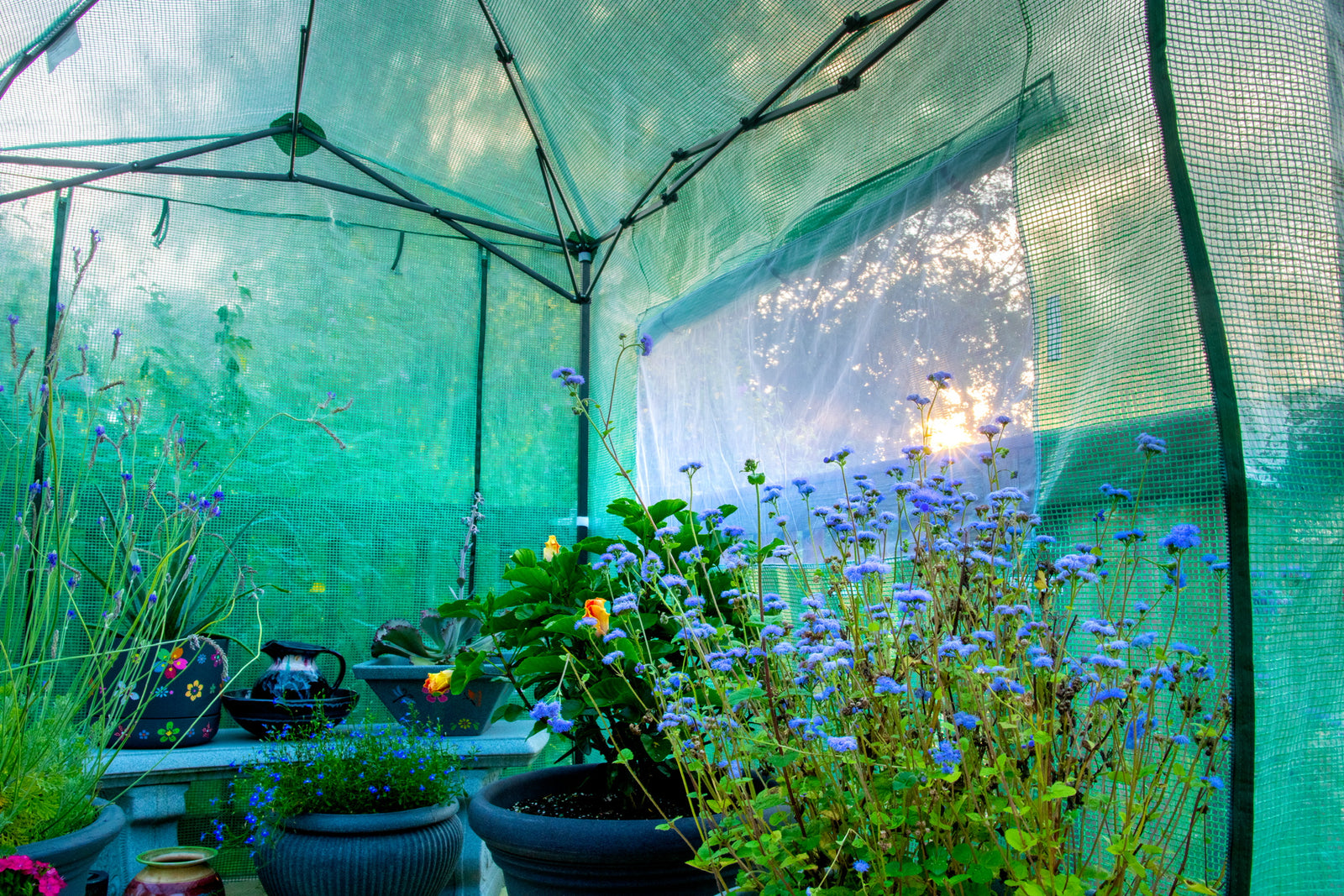When it comes to choosing a greenhouse cover, there are several options available, with polyethylene (PE) and polyvinyl chloride (PVC) being two of the most popular materials. While PVC covers may be cheaper, there are several reasons why PE greenhouse covers are a better choice. In this blog, we'll discuss some of the reasons why PE covers are a better investment in the long run and why EAGLE PEAK chooses to use PE covers for all of its Pop-Up Greenhouses.
- Durability and Strength PE greenhouse covers are known for their strength and durability. They are resistant to punctures, tears, and rips, which means that they can withstand harsh weather conditions such as strong winds, hailstorms, and heavy snow. PVC, on the other hand, can be easily punctured or torn, which makes it less durable than PE.
- Light Transmission PE greenhouse covers allow more light to pass through than PVC covers. This is because PE is a more transparent material, which means that plants get more natural sunlight. PVC, on the other hand, tends to be more opaque, which can reduce the amount of light that plants receive. This can affect the growth of plants, especially those that require a lot of sunlight.
- Thermal Conductivity PE greenhouse covers have a lower thermal conductivity than PVC covers. This means that they are better at retaining heat and maintaining a stable temperature inside the greenhouse. This is important because it can help to prevent plants from getting too cold or too hot, which can affect their growth. PVC, on the other hand, has a higher thermal conductivity, which means that it is less effective at retaining heat.
- Environmental Impact PE greenhouse covers are considered to be more environmentally friendly than PVC covers. This is because they are made from a recyclable material, which means that they can be reused or recycled at the end of their useful life. PVC, on the other hand, is a non-biodegradable material (with pthalates), which means that it can take hundreds of years to decompose in a landfill.
- Cost-Effectiveness While PVC covers may be cheaper initially, they are not as cost-effective in the long run. This is because they are less durable than PE covers and need to be replaced more frequently. PE covers, on the other hand, have a longer lifespan and require less frequent replacement, which makes them a better investment in the long run.
In conclusion, while PVC greenhouse covers may be cheaper initially, they are less durable, less environmentally friendly, and less effective at maintaining a stable temperature and allowing for optimal light transmission. PE has been extensively reviewed by regulatory authorities and determined to be non-hazardous by normal routes of exposure. PE greenhouse covers, on the other hand, are a better investment in the long run because they are more durable, environmentally friendly, and better at maintaining a stable temperature and allowing for optimal light transmission.
Eagle Peak

